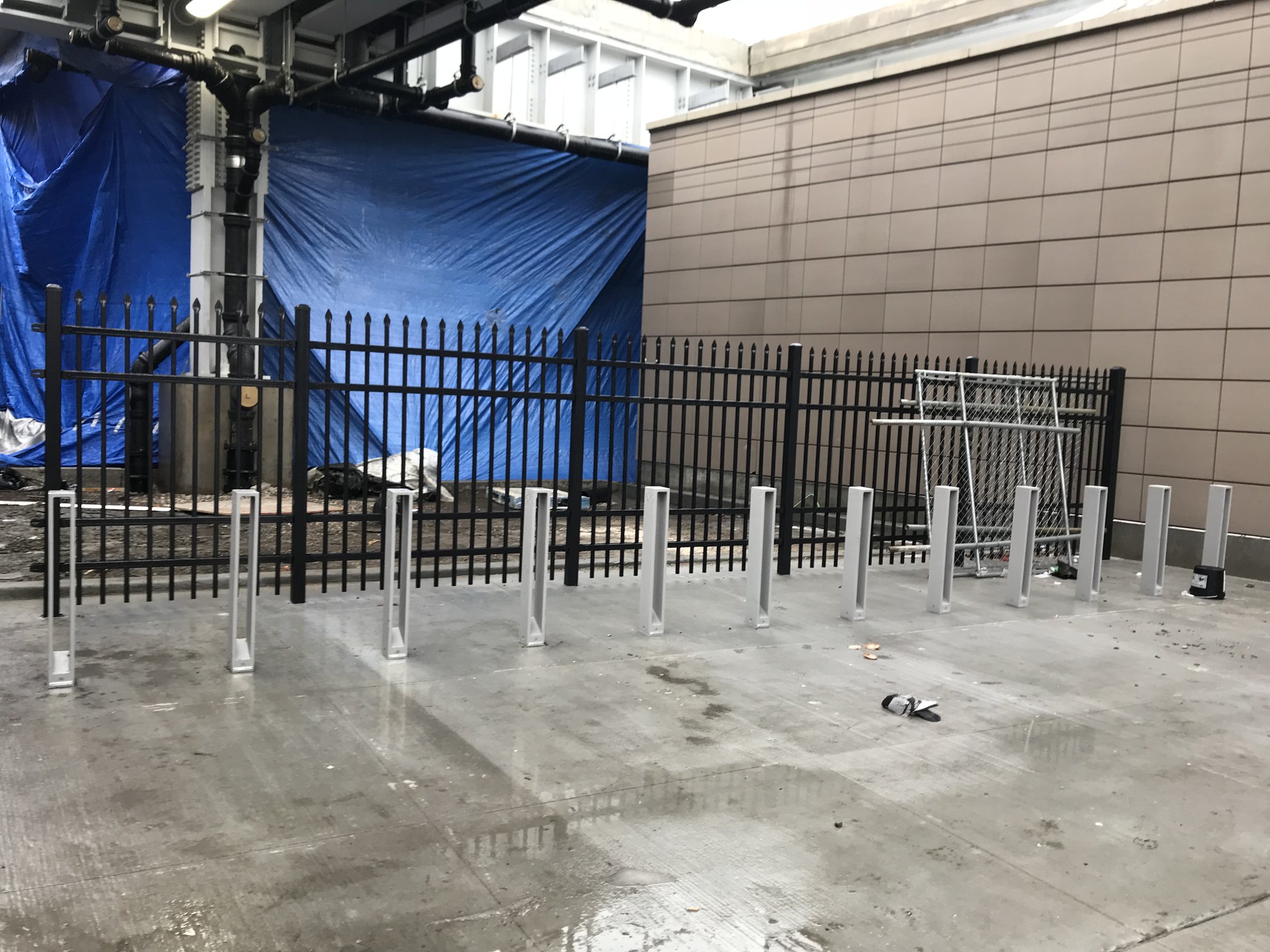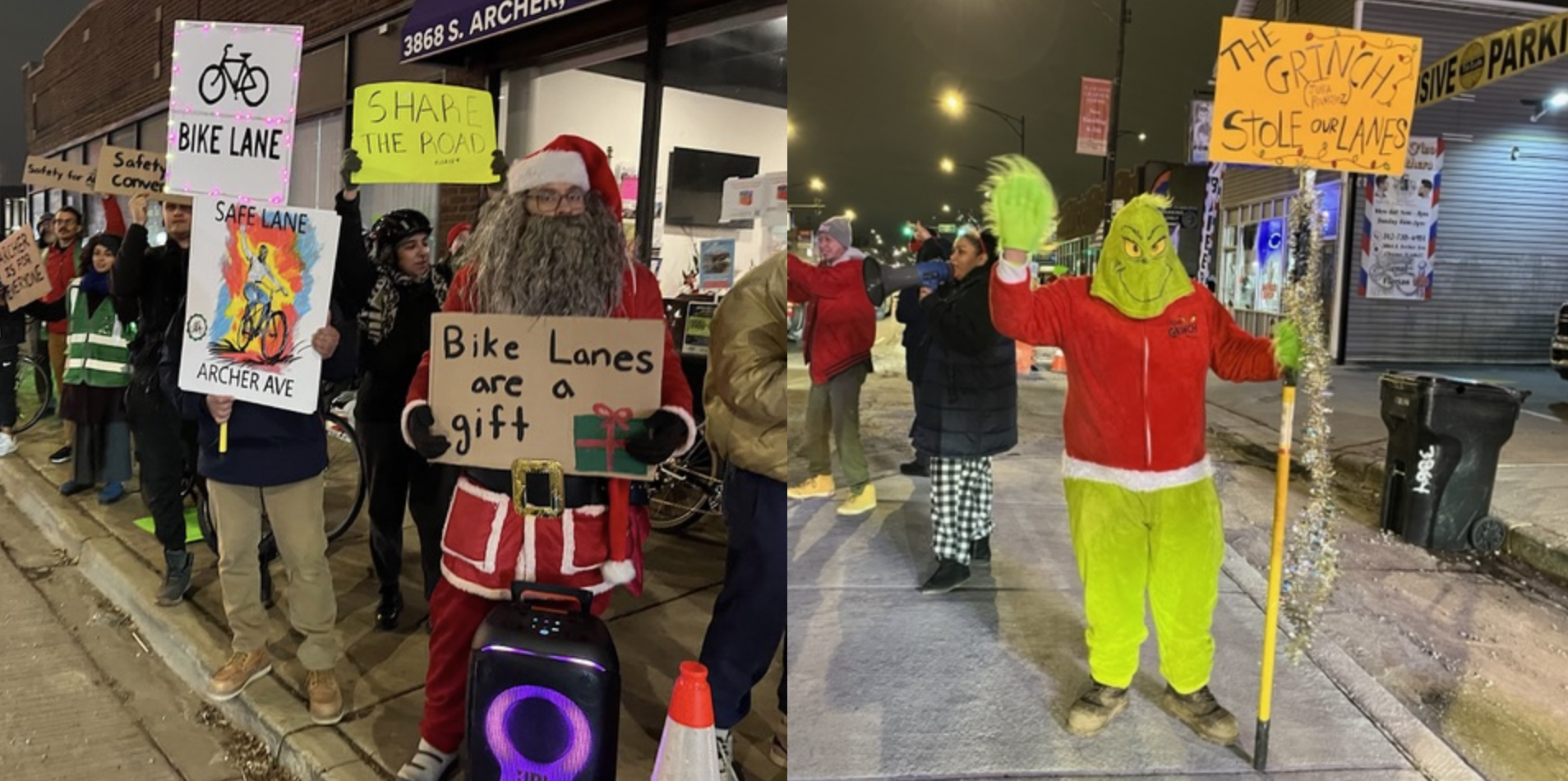If you’re a regular Streetsblog Chicago reader you may be aware that I’m a fan of the nearly completed Wilson ‘L’ station reconstruction in Uptown. The project includes transforming the stop into a Red-Purple transfer, adding wheelchair accessibility, new station entrances, the restoration of the 1923 Gerber building, and cool public art by Cecil Balmond. Our readers recently voted the rehab to be the best transit initiative of 2017 in the Chicago Streetsies competition.
However, this morning I noticed a minor misstep by the planners. Recently installed bicycle parking fixtures represent a triumph of aesthetics over practicality.
Full disclosure: I worked as the Chicago Department of Transportation’s bike parking manager for several years in the early- and mid-2000s. Therefore I’ve spent way more time obsessing about the ideal shape and placement of bike racks than the average cyclist has.
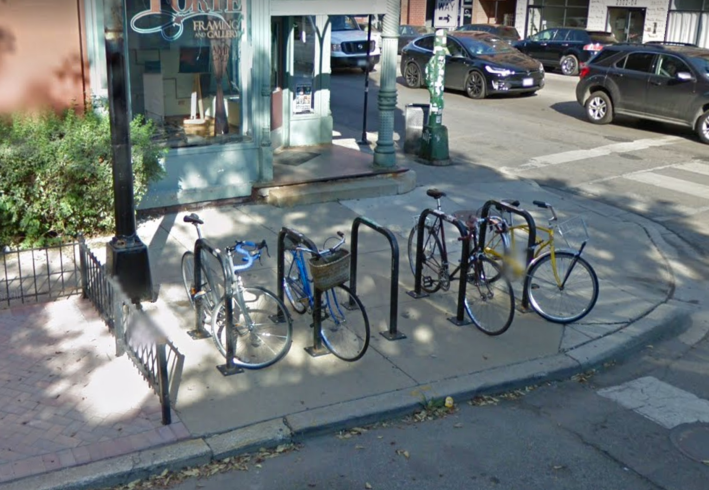
I also personally arranged for three of the city’s standard, black “inverted U” racks to be installed inside the Gerber Building back around 2005, when the building served as the main station entrance. It was a nifty little weather-protected installation, if I do say so myself. It's not clear whether the indoor racks will be replaced as part of the Wilson rehab -- I'm looking into this.
While I’m not trying to be a hater here, I get the sense that the folks who selected the racks for the Wilson station don’t actually ride bikes much. The new rectangular fixtures look sleek, and may have been somewhat cheaper to install than inverted Us, but they’re not particularly functional.
This design works OK for securing a bike with a full-size U-lock or a cable. (But note that it’s foolish to use anything but the thickest cable lock as your primary bike security in a city like Chicago where bike theft is common, since most cables are easy to cut.) It’s possible to cram two bikes on each of the rectangular racks, although they’re really only suitable for one bike per fixture.
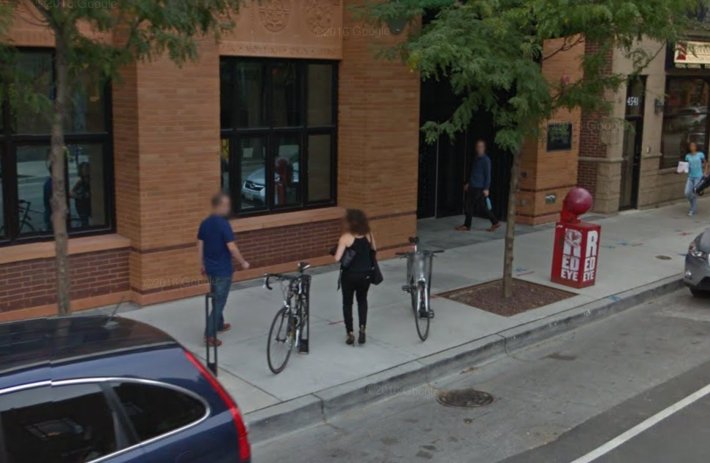
However, the new Wilson racks don’t really work with mini U-locks, which are popular with urban bike commuters because they’re relatively light, fit nicely in a back jeans pocket, and allow you to lock the wheel and frame of your ride to most inverted U racks. (Of course, you also have to make sure that other wheel isn’t vulnerable to theft by securing it with another lock, using anti-theft skewers, or taking it with you.) In fact, mini U-locks are harder to defeat that full-sized ones, because there’s less room for a thief to insert a prying instrument and break the lock.
One might be able to secure the frame and rear wheel of a bike to one of the rectangular racks with a mini lock by locking the wheel to the fixture from within the frame’s rear triangle, which also secures the frame. However, most cyclists probably aren’t going to be aware of this hack, and will instead seek out the nearest sign pole or wrought iron fence. In fact, there’s a fence on the south side of Wilson west the main station entrance by a Divvy station that’s currently a popular place to lock up.
Speaking of which, I’m suspicious that this rack design was chosen for Wilson stop because the rectangles echo the form of Divvy docks. I wouldn’t be surprised if confused visitors try to dock their Divvies within the openings of the new fixtures.
I understand that when your local transit authority installs bike racks that are less-than-ideal, that’s a good problem to have. Many urban systems aren’t as bike-friendly as the CTA, which has carrying racks on all buses and allows bikes on trains during all non-rush-hour times.
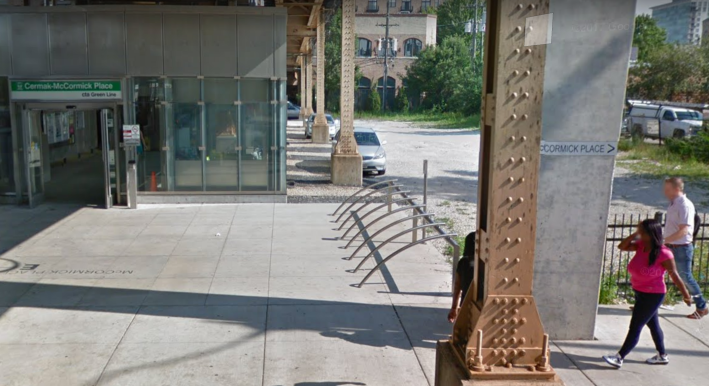
Still, the installation of bike racks that are deemed architecturally appropriate, but don’t function well, at ‘L’ stations is an annoying, recurring issue. For example, the stainless steel racks at the recently opened Cermak Green Line stop may look nice, but bikes locked to them tend to fall over because the rack doesn’t easily support the bike in two places. Moreover, unlike the square tubing used on the inverted U racks installed by CDOT, the round tubing used here is susceptible to pipe cutter attacks. Similarly attractive, but impractical, racks made of stainless steel tubing were installed by the new Morgan Green Line station.
The bottom line is, when it comes to outdoor bike parking, it’s hard to beat good old inverted Us, installed parallel to each other in a sequence, for space efficiency, security, and ease of use, so CTA station planners shouldn’t try to reinvent the wheel. (The CTA does have some nice indoor installations featuring double-decker racks, such as what currently exists at the 95th Street terminal.) U racks may not be a particularly sexy bike parking solution, but as legendary Chicago architect Louis Sullivan said, “Form follows function.” It shouldn’t be the other way around.
